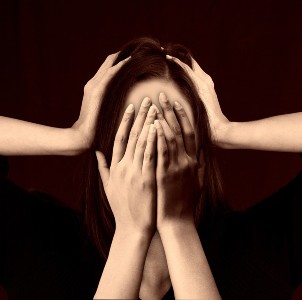Shared psychotic disorder: a case report in Switzerland

Accepted: 29 September 2023
All claims expressed in this article are solely those of the authors and do not necessarily represent those of their affiliated organizations, or those of the publisher, the editors and the reviewers. Any product that may be evaluated in this article or claim that may be made by its manufacturer is not guaranteed or endorsed by the publisher.
Folie à deux is a rare psychiatric syndrome in which one individual transmits a psychotic symptom to another. In this report, we present a case of folie à deux. The case suggests a possible correlation with neglect, which may have played a role in the development of the symptoms. A 21-year-old Swiss boy and his mother were found to share the same delusional beliefs, forming a case of folie à deux (shared psychotic disorder). The boy had suffered neglect from his parents and was being cared for by his mother, who had no history of mental disorder. The close relationship between the boy and his mother, the family history of first-degree psychosis, and the boy’s experience of neglect may have increased his vulnerability to early-onset psychosis and folie à deux.
Lasegue C, Falret J. La folie à deux. Annales Medico-Psychologiques 1877;17:320–55.
Regis E. La folie à deux, ou folie simultanée: avec observations recueillies à la clinique de pathologie mentale (asile Sainte-Anne) Paris: J.-B. Baillière;1880.
Gralnick A. Folie a deux-the psychosis of association: a review of 103 cases and the entire English literature: with case presentations. The Psychiatric Quarterly1942;16:230–63. DOI: https://doi.org/10.1007/BF01576134
Silveria JM, Seeman MV. Shared psychotic disorder: a critical review of the literature. J Psychiatry 1995;40:389–95. DOI: https://doi.org/10.1177/070674379504000705
Arnone D, Patel A, Tan GM. The nosological significance of folie à deux: a review of the literature. Ann Gen Psychiatry 2006;5:1–8. DOI: https://doi.org/10.1186/1744-859X-5-11
Bugeme M, Mukuku O, Mobambo P, et al. Folie à trois in Lubumbashi: about one case. Panafrican Med J 2013;14:47. DOI: https://doi.org/10.11604/pamj.2013.14.47.2339
Srivastava A, Borkar HA. Folie a famille. Indian J Psychiatry 2010;52:69-70. DOI: https://doi.org/10.4103/0019-5545.58899
Al Saif F, Al Khalili Y. Shared Psychotic Disorder. [Updated 2022 Aug 29]. In: StatPearls [Internet]. Treasure Island (FL): StatPearls Publishing; 2023.
Kumar PNS, Subramanyam N, Thomas B, et al. Folie à deux. Indian J Psychiatry 2005;47:164–66. DOI: https://doi.org/10.4103/0019-5545.55942
American Psychiatric Association. Diagnostic and Statistical Manual of Mental Disorders.5th. Washington D.C.: 2013. DOI: https://doi.org/10.1176/appi.books.9780890425596
Lasegue C, Falret J. La Folie à deux (ou folie communiquée). Am J Psychiatry 1964;121:2.
Howard R. Induced psychosis. Fr. J Hosp Med 1994;51:304–7. DOI: https://doi.org/10.1093/ajhp/51.3.304
Deutsch H. La psychanalyse des névroses et autres essais: études de clinique psychanalytique. Paris: Payot; 1970;203–211.
Jana AK, Praharaj SK, Sarkar S, et al. Folie á deux between two unrelated individuals. Turk Psikiyatri Derg 2009;20:299-304.
Copyright (c) 2023 the Author(s)

This work is licensed under a Creative Commons Attribution-NonCommercial 4.0 International License.
PAGEPress has chosen to apply the Creative Commons Attribution NonCommercial 4.0 International License (CC BY-NC 4.0) to all manuscripts to be published.


 https://doi.org/10.4081/ecj.2023.11599
https://doi.org/10.4081/ecj.2023.11599







